Ethyl 4-hydroxy-6-methyl-2-oxo-1,2-dihydropyridine-3-carboxylate
Modify Date: 2025-08-24 13:40:39
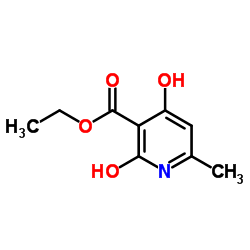
Ethyl 4-hydroxy-6-methyl-2-oxo-1,2-dihydropyridine-3-carboxylate structure
|
Common Name | Ethyl 4-hydroxy-6-methyl-2-oxo-1,2-dihydropyridine-3-carboxylate | ||
|---|---|---|---|---|
| CAS Number | 10350-10-4 | Molecular Weight | 197.188 | |
| Density | 1.3±0.1 g/cm3 | Boiling Point | 446.0±40.0 °C at 760 mmHg | |
| Molecular Formula | C9H11NO4 | Melting Point | 216-222ºC | |
| MSDS | N/A | Flash Point | 223.6±27.3 °C | |
| Name | Ethyl 4-hydroxy-6-methyl-2-oxo-1,2-dihydropyridine-3-carboxylate |
|---|---|
| Synonym | More Synonyms |
| Density | 1.3±0.1 g/cm3 |
|---|---|
| Boiling Point | 446.0±40.0 °C at 760 mmHg |
| Melting Point | 216-222ºC |
| Molecular Formula | C9H11NO4 |
| Molecular Weight | 197.188 |
| Flash Point | 223.6±27.3 °C |
| Exact Mass | 197.068802 |
| PSA | 79.39000 |
| LogP | 0.04 |
| Vapour Pressure | 0.0±1.1 mmHg at 25°C |
| Index of Refraction | 1.571 |
| InChIKey | CMCZAWPDHHYFPU-UHFFFAOYSA-N |
| SMILES | CCOC(=O)c1c(O)cc(C)[nH]c1=O |
| Storage condition | 2-8°C |
Synonym: SECTION 2 - COMPOSITION, INFORMATION ON INGREDIENTS
Risk Phrases: 20/21/22 36/37/38 SECTION 3 - HAZARDS IDENTIFICATION EMERGENCY OVERVIEW Harmful by inhalation, in contact with skin and if swallowed. Irritating to eyes, respiratory system and skin. Potential Health Effects The toxicological properties of this material have not been investigated. Use appropriate procedures to prevent opportunities for direct contact with the skin or eyes and to prevent inhalation. SECTION 4 - FIRST AID MEASURES Eyes: Immediately flush eyes with plenty of water for at least 15 minutes, occasionally lifting the upper and lower eyelids. Skin:
Flush skin with plenty of water for at least 15 minutes while removing contaminated clothing and shoes. Ingestion: Wash mouth out with water. If swallowed, do not induce vomiting unless directed to do so by medical personnel. Never give anything by mouth to an unconscious person. Inhalation: Remove from exposure and move to fresh air immediately. Notes to Physician: SECTION 5 - FIRE FIGHTING MEASURES General Information: Not available. Extinguishing Media: Not available. SECTION 6 - ACCIDENTAL RELEASE MEASURES General Information: Use proper personal protective equipment as indicated in Section 8. Spills/Leaks: Vacuum or sweep up material and place into a suitable disposal container. SECTION 7 - HANDLING and STORAGE Handling: Container should be opened by a technically qualified person. Storage: Store in a cool, dry, well-ventilated area away from incompatible substances. SECTION 8 - EXPOSURE CONTROLS, PERSONAL PROTECTION Engineering Controls: Exposure Limits CAS# 10350-10-4: Personal Protective Equipment Eyes: Not available. Skin: Not available. Clothing: Not available. Respirators: Not available. SECTION 9 - PHYSICAL AND CHEMICAL PROPERTIES Physical State: Solid Color: White Odor: Not available. pH: Not available. Vapor Pressure: Not available. Viscosity: Not available. Boiling Point: Not available. Freezing/Melting Point: 205 - 207 deg C Autoignition Temperature: Not available. Flash Point: Not available. Explosion Limits, lower: Not available. Explosion Limits, upper: Not available. Decomposition Temperature: Solubility in water: Specific Gravity/Density: Molecular Formula: C9H11NO4 Molecular Weight: 197.19 SECTION 10 - STABILITY AND REACTIVITY Chemical Stability: Stable under normal temperatures and pressures. Conditions to Avoid: High temperatures, incompatible materials. Incompatibilities with Other Materials: Strong bases, strong oxidizing agents. Hazardous Decomposition Products: Carbon monoxide, oxides of nitrogen, carbon dioxide. Hazardous Polymerization: Not available. SECTION 11 - TOXICOLOGICAL INFORMATION RTECS#: CAS# 10350-10-4 unlisted. LD50/LC50: Not available. Carcinogenicity: Ethyl-4-hydroxy-6-methyl-2-oxo-1,2-dihydropyridine-3-carboxylate - Not listed by ACGIH, IARC, or NTP. SECTION 12 - ECOLOGICAL INFORMATION SECTION 13 - DISPOSAL CONSIDERATIONS Dispose of in a manner consistent with federal, state, and local regulations. SECTION 14 - TRANSPORT INFORMATION IATA Shipping Name: TOXIC SOLID, ORGANIC, N.O.S. Hazard Class: 6.1 UN Number: 2811 Packing Group: III IMO Shipping Name: TOXIC SOLID, ORGANIC, N.O.S. Hazard Class: 6.1 UN Number: 2811 Packing Group: III RID/ADR Shipping Name: TOXIC SOLID, ORGANIC, N.O.S. Hazard Class: 6.1 UN Number: 2811 Packing group: III SECTION 15 - REGULATORY INFORMATION European/International Regulations European Labeling in Accordance with EC Directives Hazard Symbols: XN Risk Phrases: R 20/21/22 Harmful by inhalation, in contact with skin and if swallowed. R 36/37/38 Irritating to eyes, respiratory system and skin. Safety Phrases: S 22 Do not breathe dust. S 26 In case of contact with eyes, rinse immediately with plenty of water and seek medical advice. S 36/37/39 Wear suitable protective clothing, gloves and eye/face protection. WGK (Water Danger/Protection) CAS# 10350-10-4: No information available. Canada None of the chemicals in this product are listed on the DSL/NDSL list. CAS# 10350-10-4 is not listed on Canada's Ingredient Disclosure List. US FEDERAL TSCA CAS# 10350-10-4 is not listed on the TSCA inventory. It is for research and development use only. SECTION 16 - ADDITIONAL INFORMATION MSDS Creation Date: 10/08/2004 Revision #0 Date: Original. The information above is believed to be accurate and represents the best information currently available to us. However, we make no warranty of merchantability or any other warranty, express or implied, with respect to such information, and we assume no liability resulting from its use. Users should make their own investigations to determine the suitability of the information for their particular purposes. In no way shall the company be liable for any claims, losses, or damages of any third party or for lost profits or any special, indirect, incidental, consequential or exemplary damages, howsoever arising, even if the company has been advised of the possibility of such damages. SECTION 16 - ADDITIONAL INFORMATION N/A |
| Hazard Codes | Xn |
|---|---|
| Risk Phrases | 22-36/37/38 |
| Safety Phrases | 22-26-36/37/39 |
| RIDADR | NONH for all modes of transport |
| HS Code | 2933399090 |
|
~77% 
Ethyl 4-hydroxy... CAS#:10350-10-4 |
| Literature: Stadlbauer, Wolfgang; Fiala, Werner; Fischer, Michaela; Hojas, Gerhard Advanced Synthesis and Catalysis, 2000 , vol. 342, # 1 p. 33 - 39 |
| Precursor 2 | |
|---|---|
| DownStream 9 | |
| HS Code | 2933399090 |
|---|---|
| Summary | 2933399090. other compounds containing an unfused pyridine ring (whether or not hydrogenated) in the structure. VAT:17.0%. Tax rebate rate:13.0%. . MFN tariff:6.5%. General tariff:20.0% |
| Ethyl-4-hydroxy-6-methyl-2-oxo-1,2-dihydropyridin-3-carboxylat |
| Ethyl2,4-dihydroxy-6-methyl-3-pyridinecarboxylate |
| Ethyl 2,4-dihydroxy-6-methylnicotinate |
| 3-pyridinecarboxylic acid, 2,4-dihydroxy-6-methyl-, ethyl ester |
| 2,4-Dihydroxy-6-methyl-3-pyridine carboxylic acid ethyl ester |
| 3-Pyridinecarboxylic acid, 1,2-dihydro-4-hydroxy-6-methyl-2-oxo-, ethyl ester |
| ethyl 2,4-dihydroxy-6-methylpyridine-3-carboxylate |
| Ethyl 4-hydroxy-6-methyl-2-oxo-1,2-dihydropyridine-3-carboxylate |
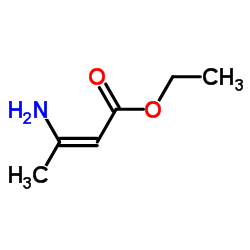
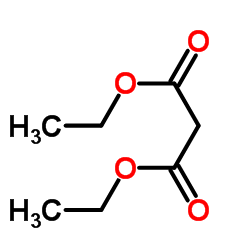
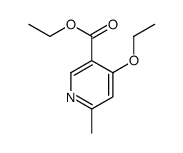 CAS#:111974-39-1
CAS#:111974-39-1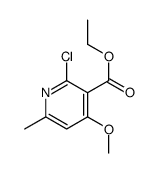 CAS#:111953-14-1
CAS#:111953-14-1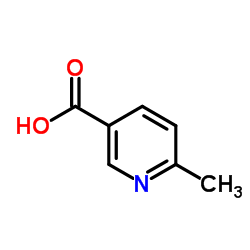 CAS#:3222-47-7
CAS#:3222-47-7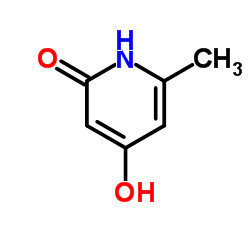 CAS#:3749-51-7
CAS#:3749-51-7 CAS#:86129-63-7
CAS#:86129-63-7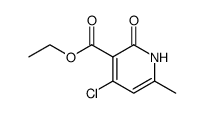 CAS#:86129-62-6
CAS#:86129-62-6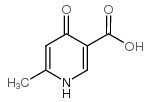 CAS#:33821-58-8
CAS#:33821-58-8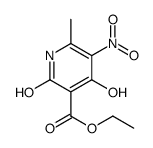 CAS#:344443-57-8
CAS#:344443-57-8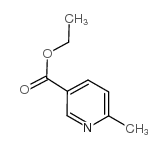 CAS#:21684-59-3
CAS#:21684-59-3
